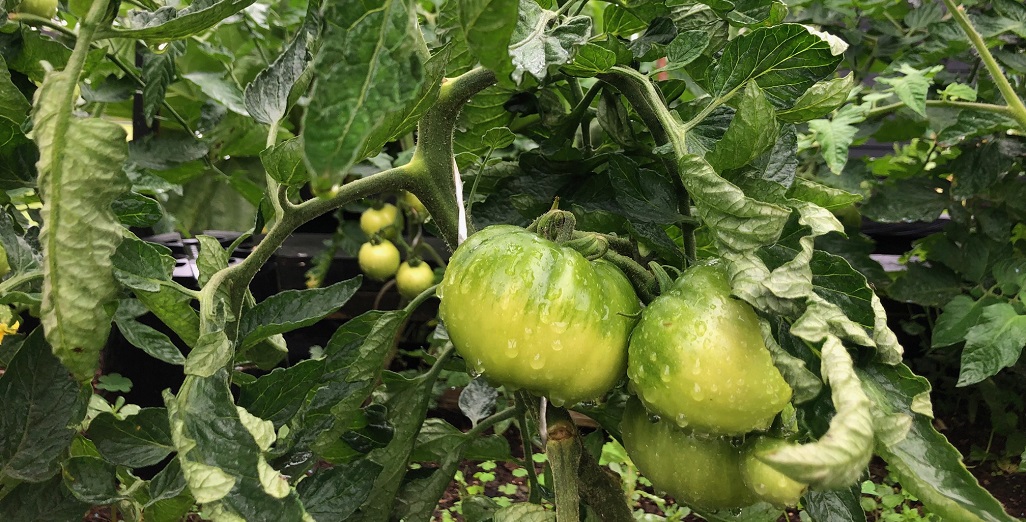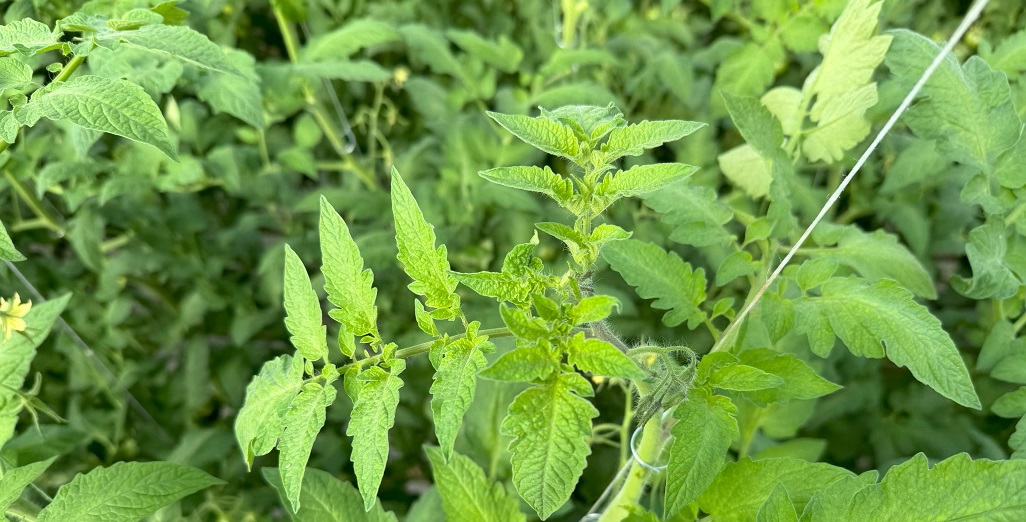Sign up here to subscribe to the Grower2grower Ezine. Every two weeks you will receive new articles, specific to the protected cropping industry, informing you of industry news and events straight to your inbox.
Feb 2018
Plant Maintenance Procedures

Plant Maintenance Procedures
This article describes techniques used for crop maintenance on Tomatoes and Cucumbers.
Tomatoes
CLIPPING OR TWISTING:
I estimate a 50/50 split between growers twisting plants up the string or clipping.Certain varieties dictate which procedure growers use.Plants that grow upright are easier to twist compared to plants growing away from the string.Plant vigour is a reason why growers sometimes use both techniques.The trick to twisting plants is to not over twist but not to leave bows.When clipping make sure not to put the clip directly above the truss.As a guideclip underneath the first leaf below each truss.Sometimes you have to add extra clips between the trusses because of potential bowing.
DROPPING/LAYERING:
How much you drop the plant depends on your cycle.Seven day cycles between twisting/clipping and dropping should be the target, in reality the average would be 7-9 days.The amount you drop the plant will vary from week to week, my preference is to lower to roughly the same level each time. It is very important when staff are layering they try to evenly space the heads so each plant can capture the same amount of light. Remember to check crop wires are also spaced correctly as this is important.
DE-LEAFING:
Breaking leaves is common. If they do not break cleanly scars and stubs may be left behind which create a pathway for disease.
Cutting leaves, with a knife, is now very common.I prefer this method as you have a nice clean wound every time. My advice is to sterilize your knife every 5-10 plants.If you are using a knife it doesn’t matter if you cut the strings as the clips further up the plant will stop the plant from falling.
TRUSS SUPPORTING AND TRUSS PRUNING:
Keeping this as a separate job can be very useful.The attention to detail is far better.If you grow a variety that requires a specific number of fruit per truss then I recommend this option.
TRUSS REMOVAL:
Ripping or cutting trusses are the two options.Ripping can leave a huge scar.Cutting is easier, but if you don’t cut the truss close to the stem, you could leave small stubs which will be another potential entry point for disease.If you harvest truss tomatoes sterilize cutters between every plant.Especially if you have varieties susceptible to bacterial canker.
Cucumbers
TWISTING:
It is very important to do a tight twist on cucumber plants.If there are too many bows your plant could slip down the string when the fruit is becoming mature, which could break the stem.Having the opportunity to twist twice a week is important.Cucumbers grow rapidly; if you do not twist regularly more damage, in the form of broken heads, may occur.Managing the labour with cucumber crops is very important.
UMBRELLA SYSTEM:
Terminating the head of the plant at the top of the wire then growing two laterals back to the ground is common.At certain times of the year, some varieties do not grow two strong laterals.If the plant is in balance, and you have thinned correctly, you have the option of growing the main head back down – leaving a side shoot from a node close to the wire to grow down also.
Layering cucumbers is also an option which not all growers consider.It can be done very successfully.It could also give you the option of taking laterals earlier and growing with more stems per m2 for a longer period of time.
These are systems I am all extremelley familar and experienced with. Please contact Grower2Grower via the commercial grower section for advice tailored for your situation. Terms and conditions apply.
Technical aritcle written by Stefan Vogrincic Grower2Grower
CLASSIFIED
Subscribe to our E-Zine
More
From This Category

Greenhouse Production in the Future – Mike Nichols
(Video of session now available) Excellent online webinar hosted by De Ruiter/Bayer Australia

An observation about Chlorosis effecting Tomato Plants.

Design a Semi Closed Greenhouse with Hortinergy

Direct Air Capture (DAC) is now a reality— Onsite CO2 generation scalable for both large and small operations






























